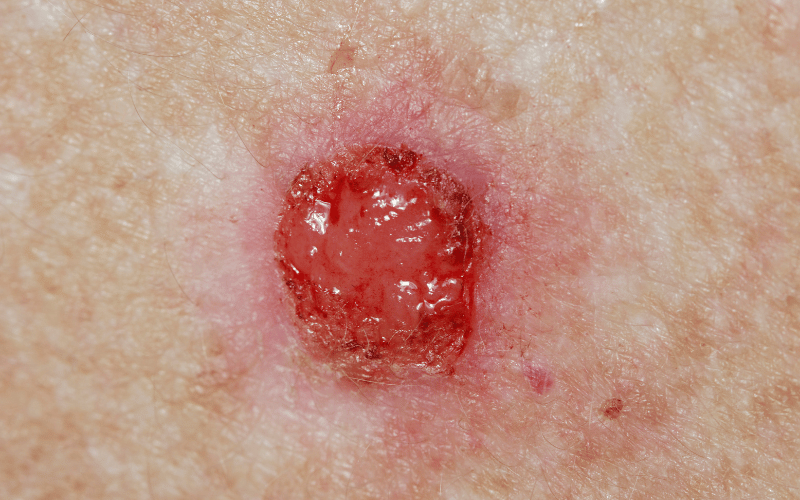2. Superficial Basal-Cell Carcinoma: The Reddish Masquerader

In the realm of basal-cell carcinomas, the superficial variant often adopts the guise of other skin conditions. A master of disguise, it primarily presents itself as a reddish patch, frequently mistaken for benign skin conditions like eczema or psoriasis.
This mimicking act is primarily seen on the chest, back, arms, and legs. Its superficial nature, combined with its deceptive appearance, makes it a challenge to diagnose promptly.
This variant of BCC, when inspected closely, reveals distinct characteristics. The patches, flat in their demeanor, carry a scaly texture.
Occasionally, an itch may accompany, drawing attention to its presence. The progression of superficial BCC is marked by its consistency. While it’s not an aggressive grower, it ensures a steady territorial expansion, causing concern over extended periods.
The primary challenge with superficial BCC lies in its uncanny resemblance to other benign skin conditions. This chameleon act often leads to misdiagnosis or prolonged periods of oversight. And while its progression is slow, the delay in detection can result in larger affected areas, demanding more extensive treatment interventions.
Given its surface-level presence, superficial BCC responds favorably to topical treatments. Medicated creams and ointments, when applied consistently, can halt and reverse its growth. Photodynamic therapy is another innovative approach.
By employing a photosensitizing agent followed by targeted light exposure, it aims to destroy the cancerous cells while sparing the healthy ones. Additionally, laser therapy offers a non-invasive solution, utilizing laser beams to vaporize the growth, ensuring minimal damage to surrounding tissues. (2)